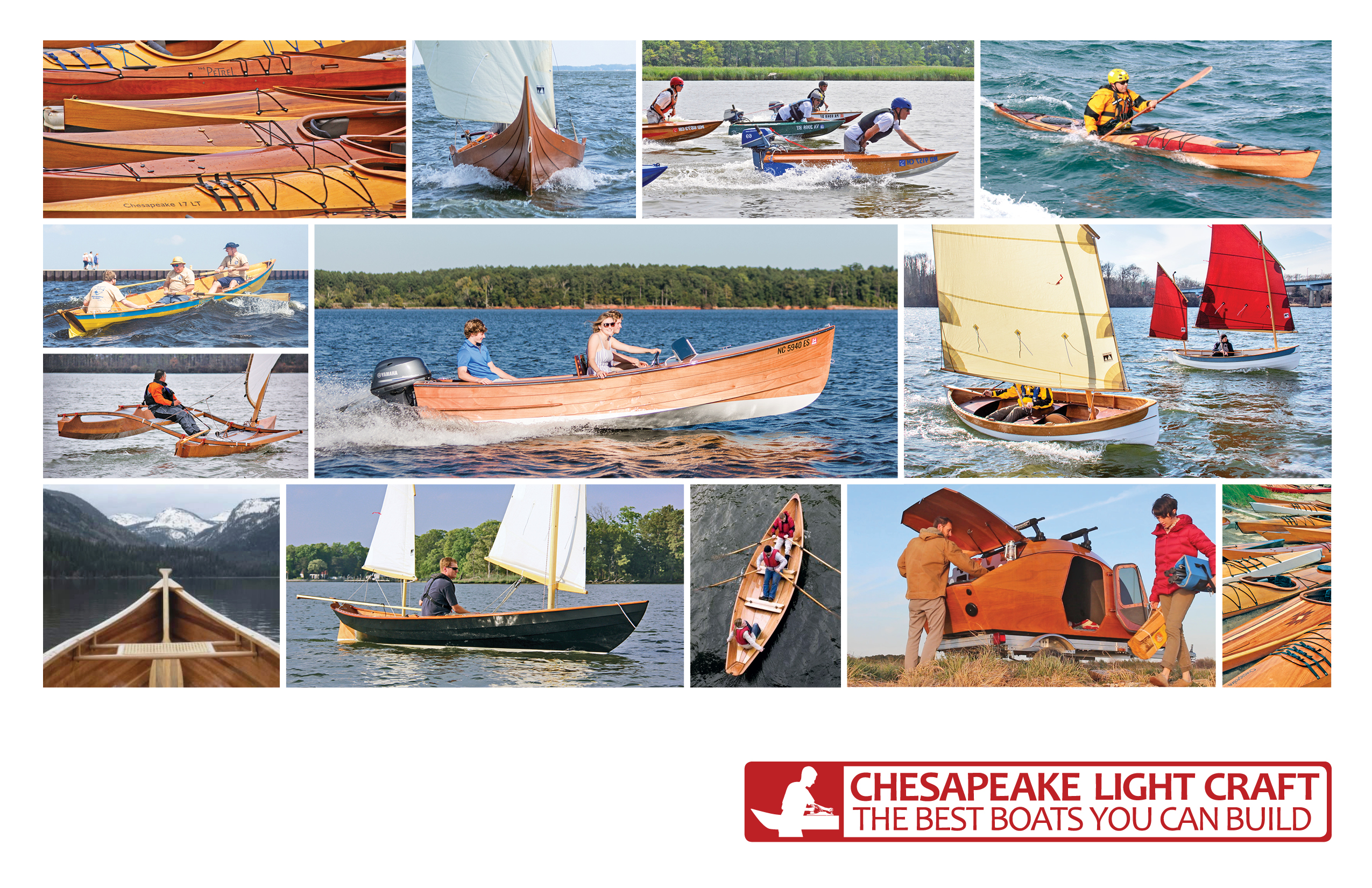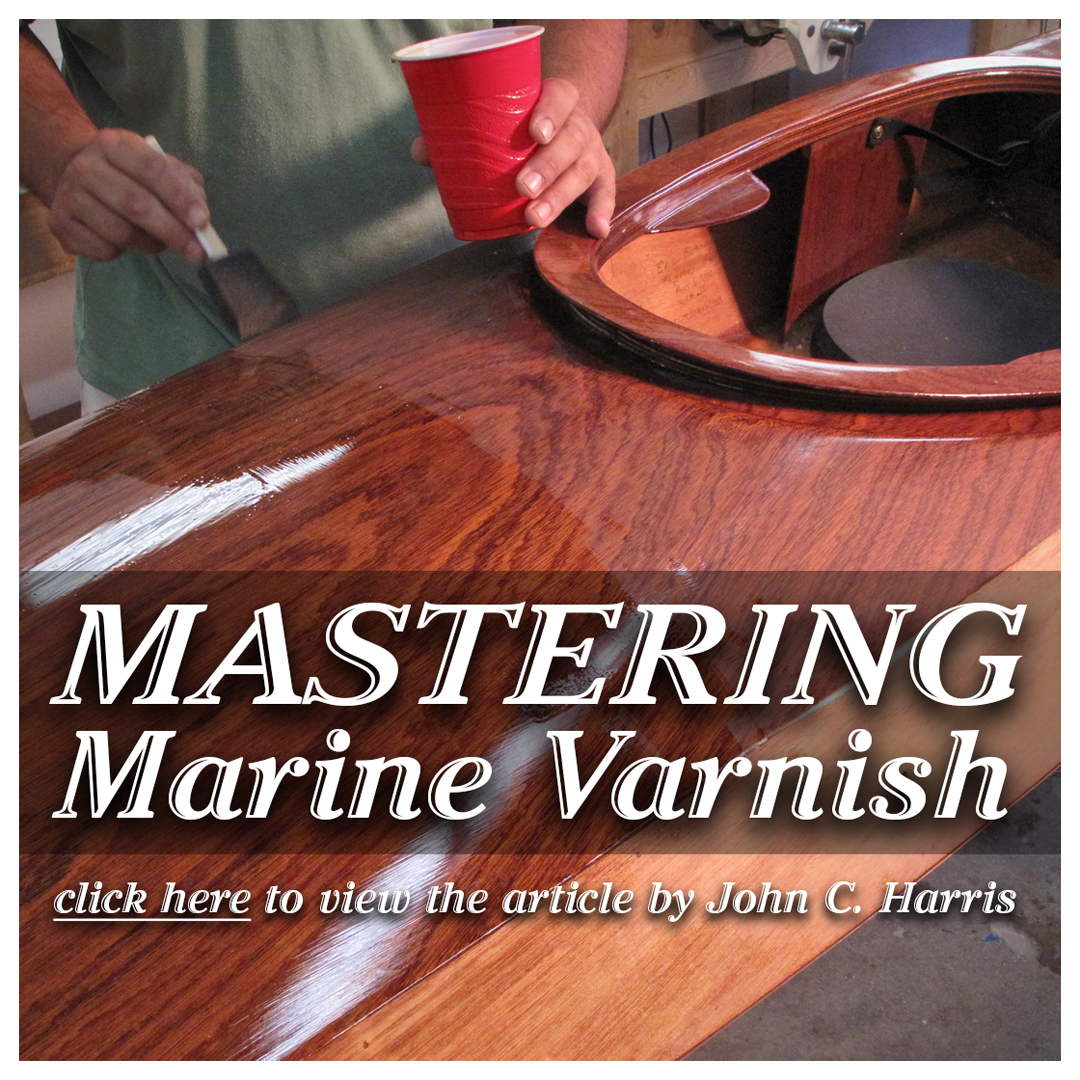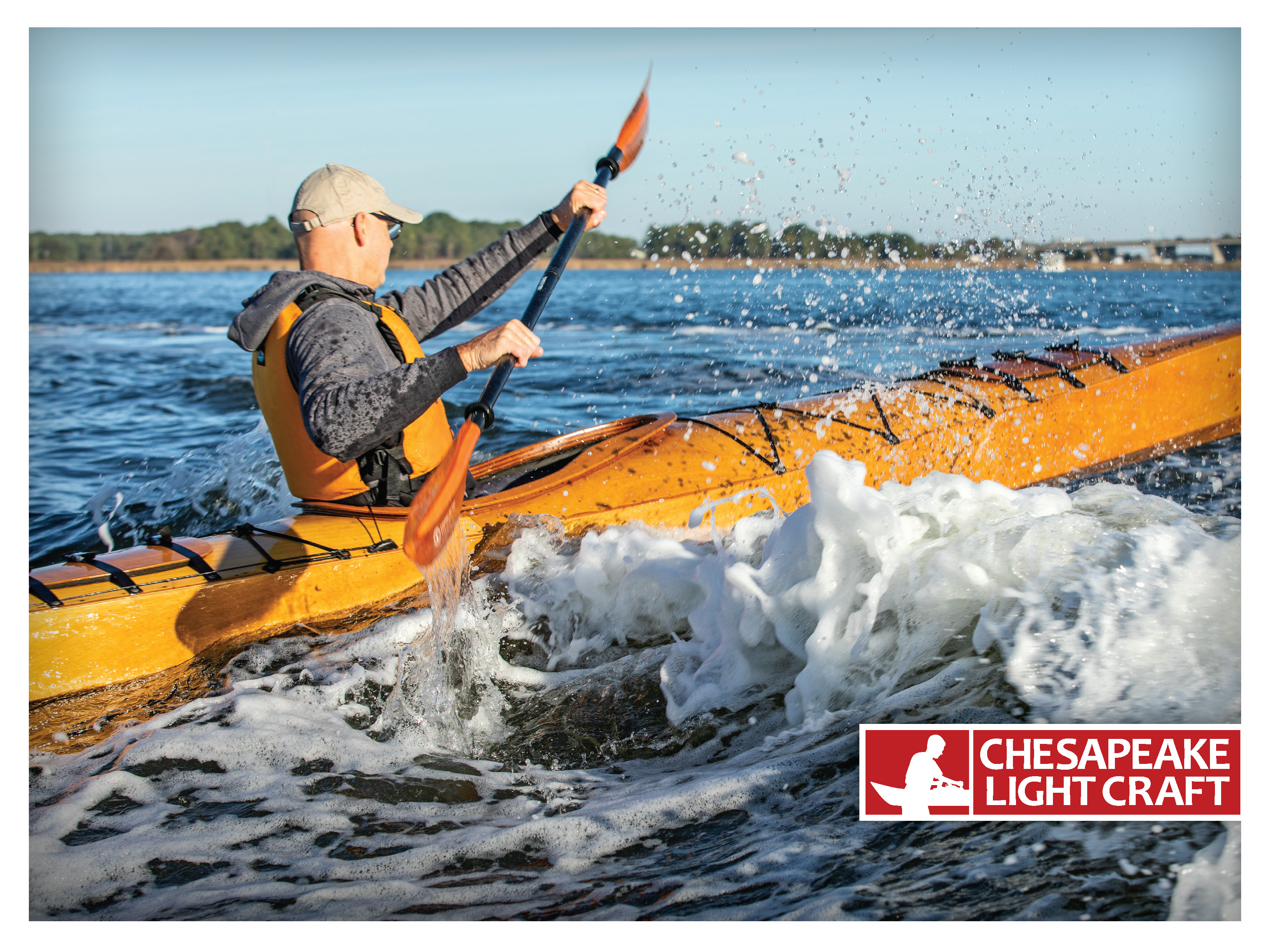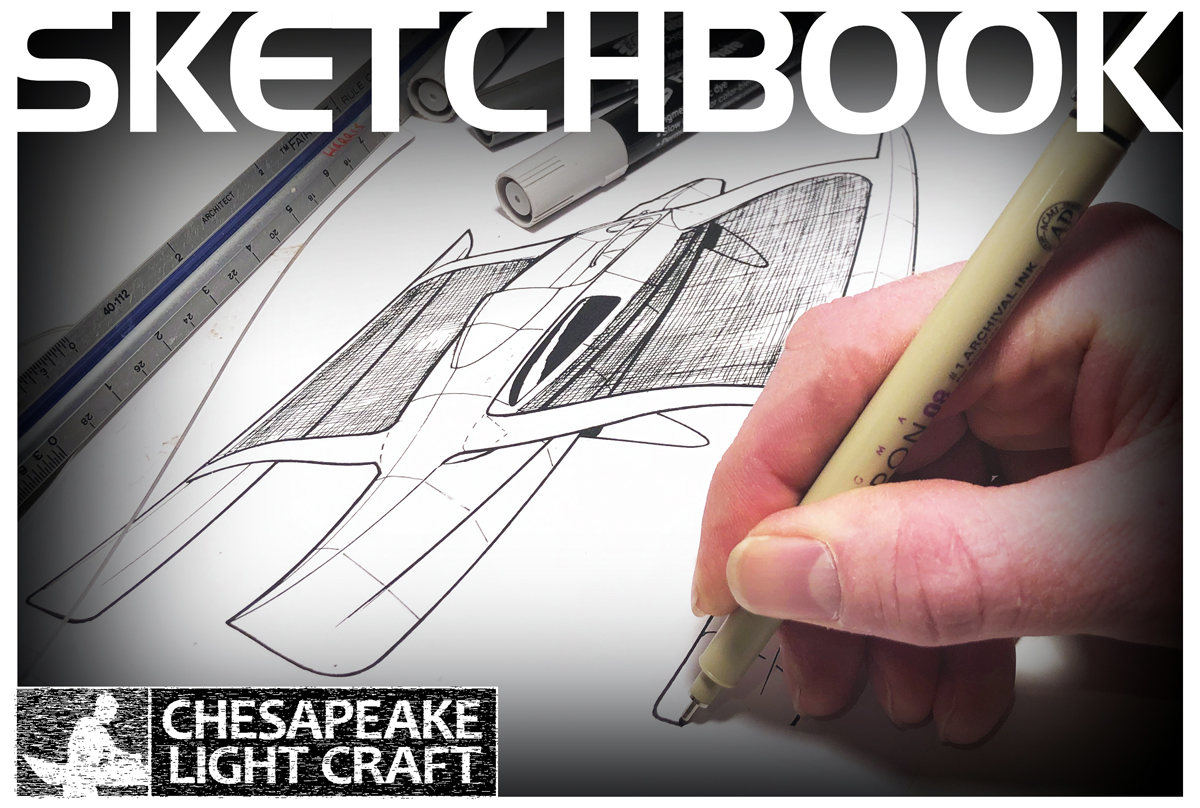by John C. Harris
January 2016
We first teamed with Laguna Creek High School's Green Energy Technology Academy in 2012. For that race I devised a relatively simple canoe with articulating solar arrays. That 20-footer accumulated an impressive collection of trophies and honors, including a trip to Monaco for an international solar boat competition. In 2015 the kids signalled that they wanted to escalate to something more elaborate. I agreed to design and donate a kit for a new boat, and in January 2016 I flew out to Laguna Creek (near Sacramento, CA) to help the kids assemble the kit.
This is a custom design, intended only for the race course. Tweaky, a little fragile, and lacking anything resembling an assembly manual, there is no expectation of making this a stock CLC kit or plan. If you simply must have one and those caveats don't deter you, send me an email at [email protected].
(Click on photos to enlarge.)
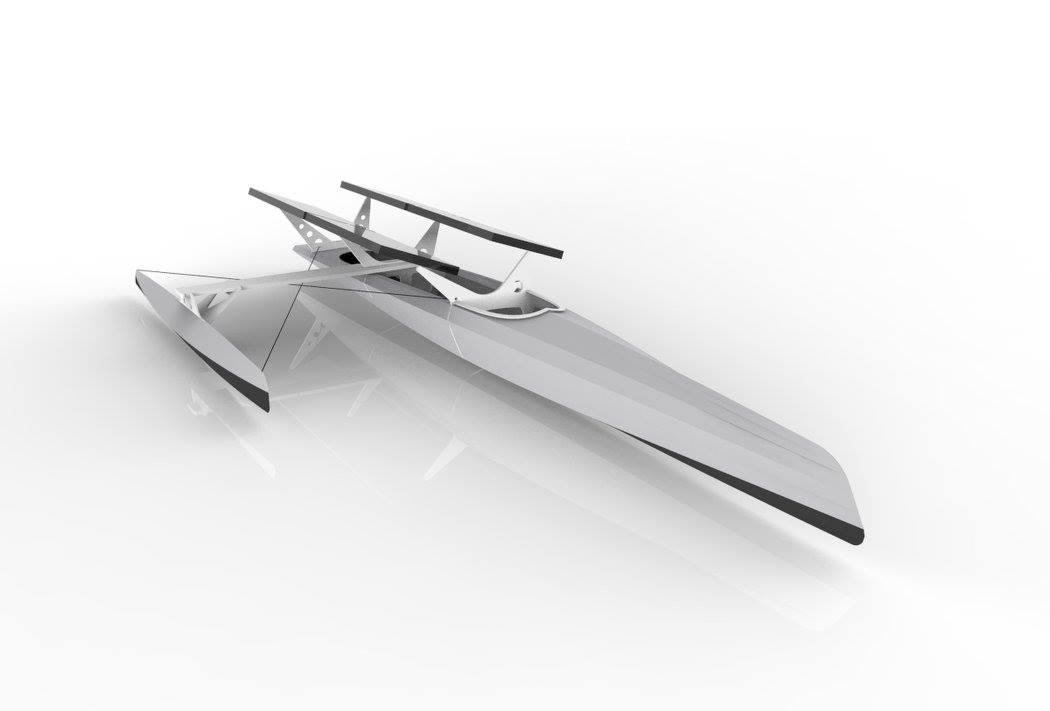
I drew the hulls and worked out the geometry for the solar panels, which can be rotated 45 degrees to port or starboard to help track the sun while negotiating the race course. CLC designer Dillon Majoros filled in much of the detail and created the elegant renderings you see here.
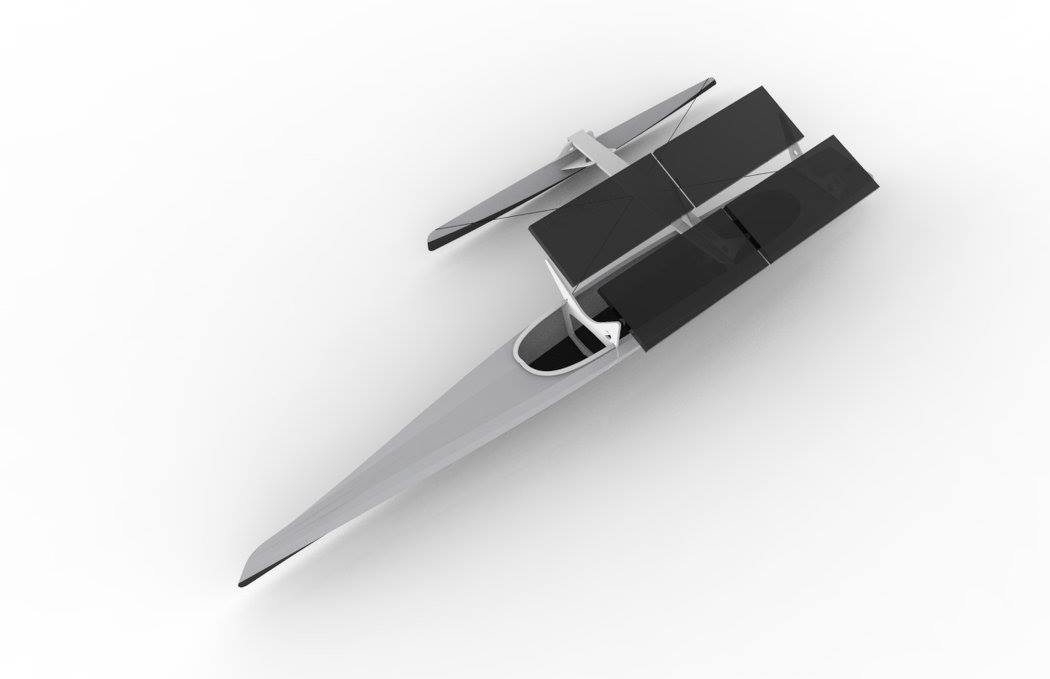
2. All competitors in this regatta, sponsored by the Sacramento Municipal Utility District, are given four identical 64-watt solar panels. Some of the racing is done under solar power alone, some under battery power alone, and some with a mixture of both.
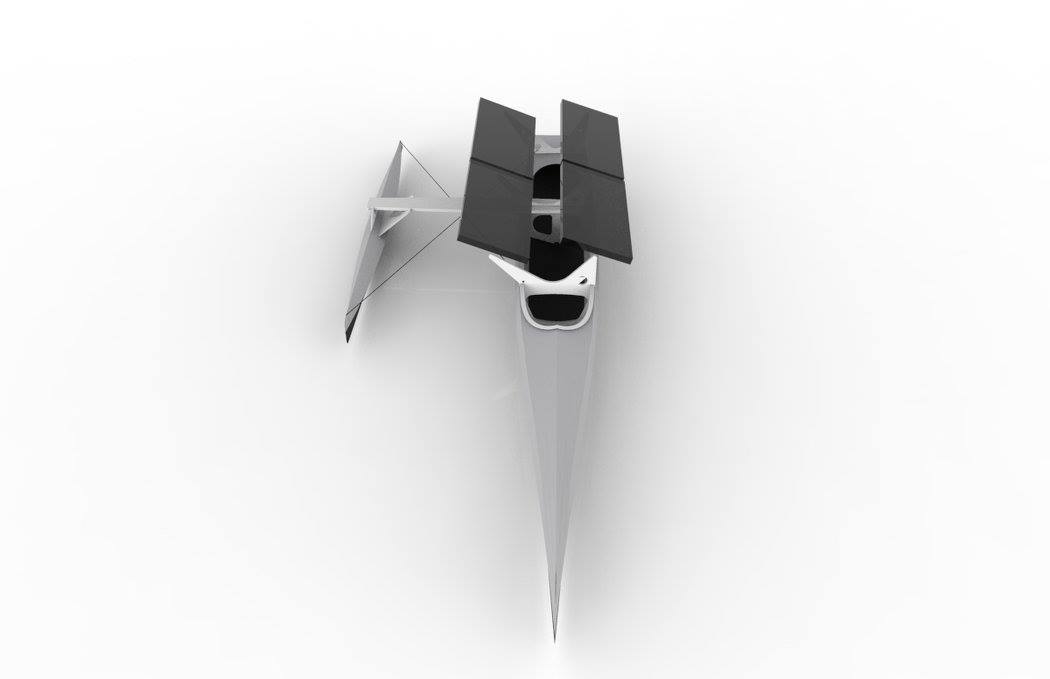
A brushless inboard DC motor driving a custom 3D-printed propeller on a titanium shaft will provide something between 100 and 400 watts of motive force, depending on which mode it's operating in. This calls for a very light and narrow boat. I opted for an outrigger arrangement, with a main hull measuring about 18 feet by 20 inches, and a skinny 10-foot outrigger to balance the boat.
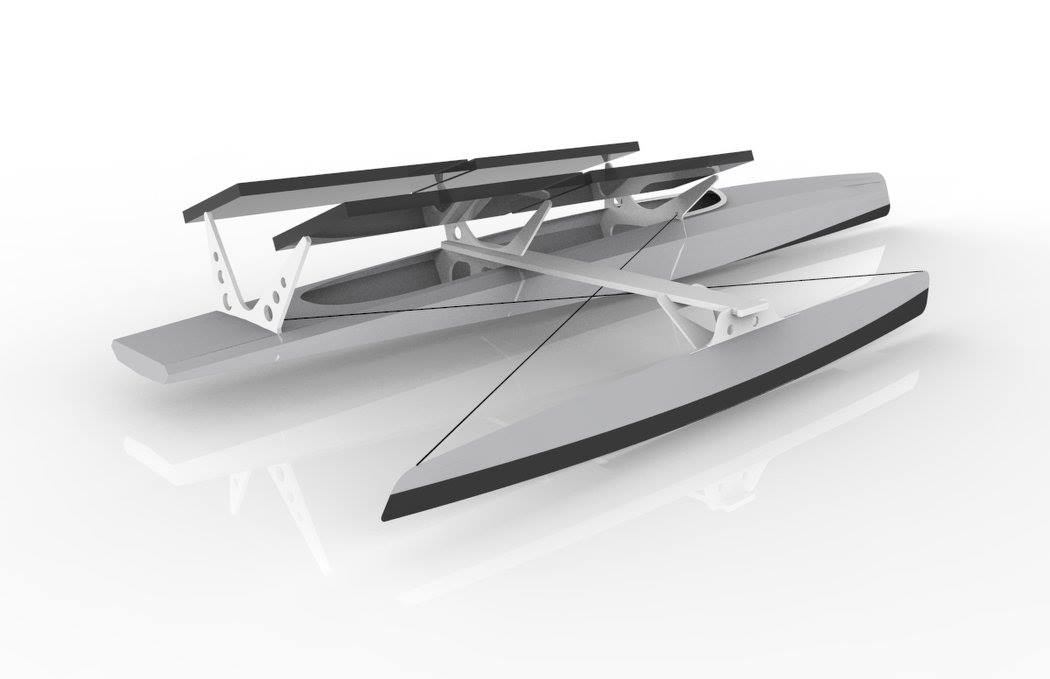
Every effort was made to minimize weight and windage. The outrigger is slung on a single hollow crossbeam with guy wires for rigidity.
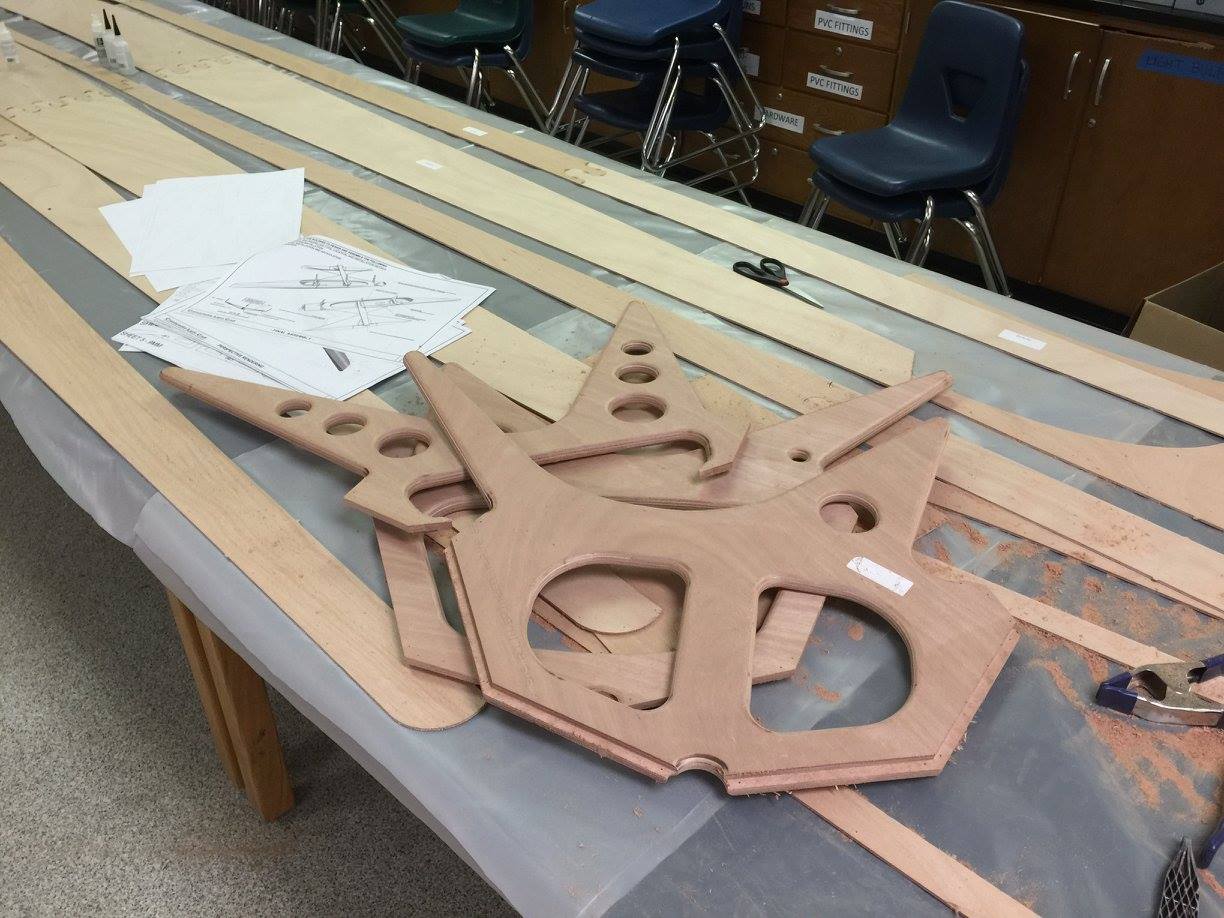
Chesapeake Light Craft donated a CNC-cut kit and supplies, while MAS Epoxies donated the adhesives.
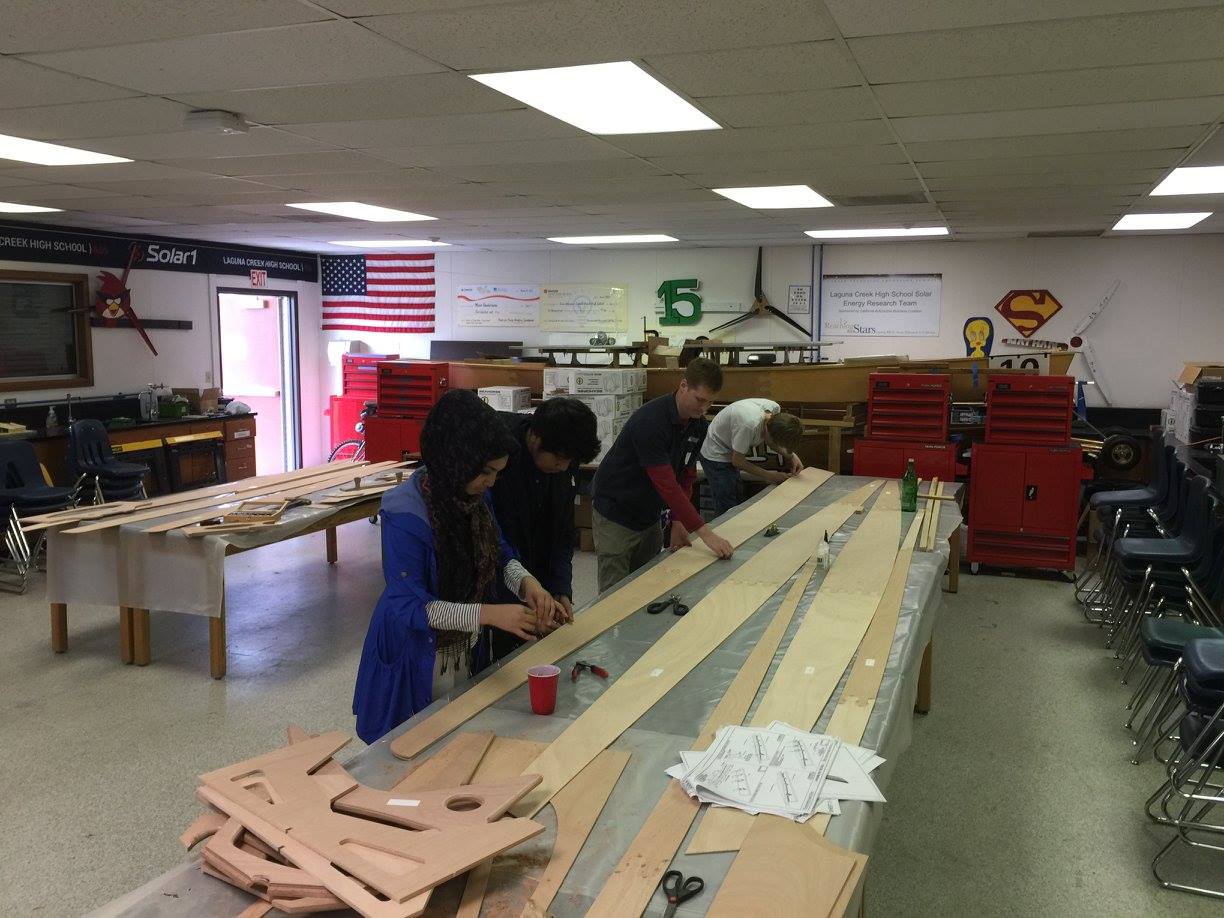
Here's your humble correspondent stitching up the hull panels with the LCHS crew. Let me tell you: this was the best bunch of kids I've ever worked with. Smart, energetic, and focused.
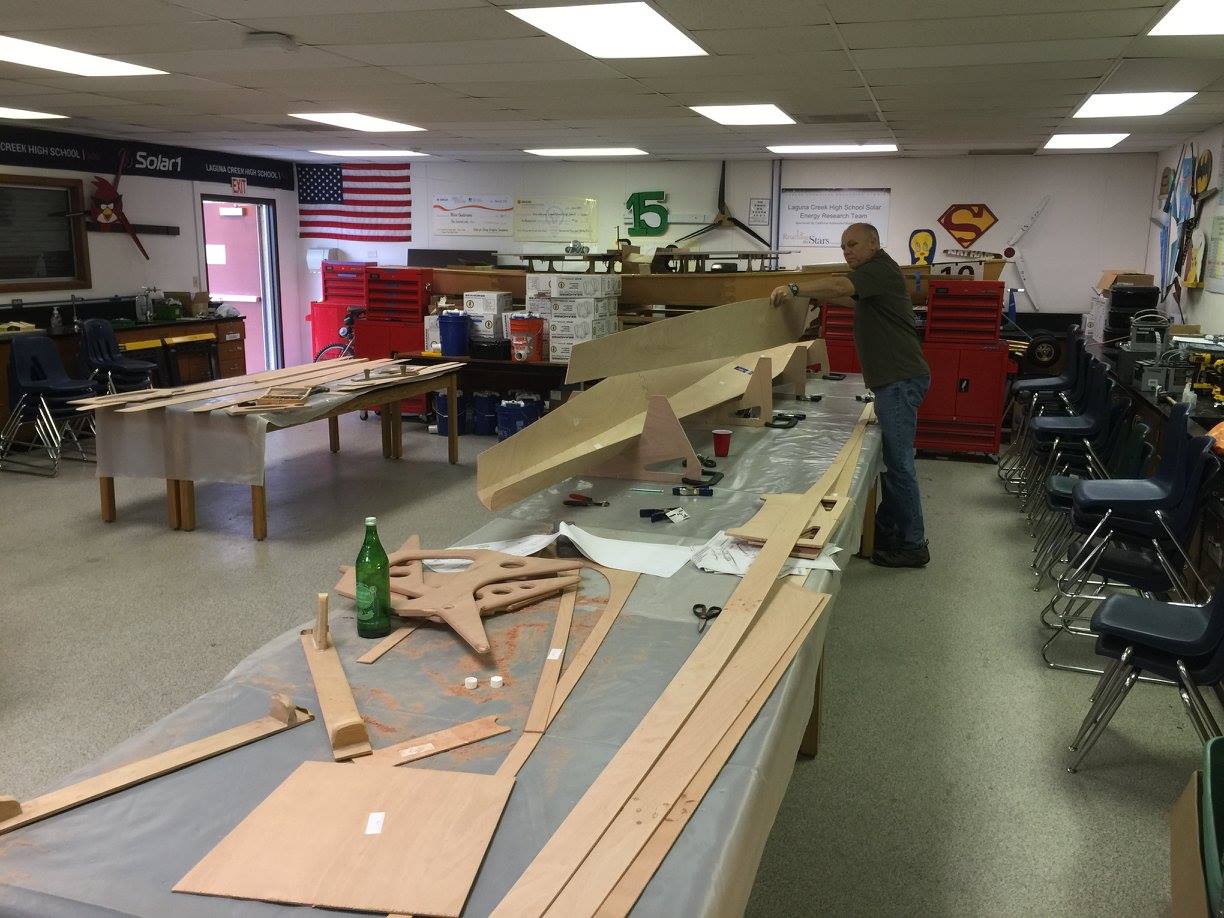
This is a straightforward stitch-and-glue design, albeit a very light one. It's all 3mm okoume plywood, assembled in female cradles.
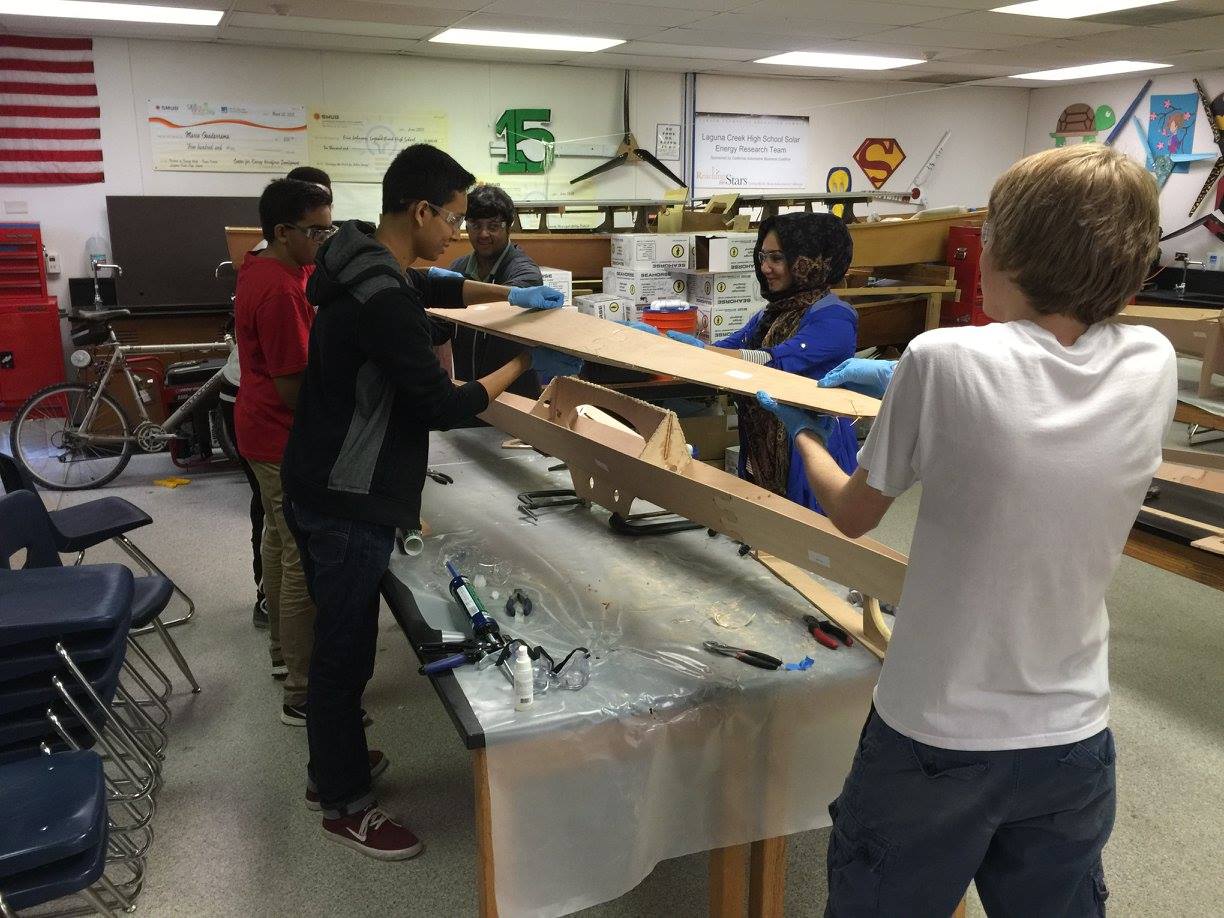
Mating the top and bottom halves of the outrigger (or "ama").
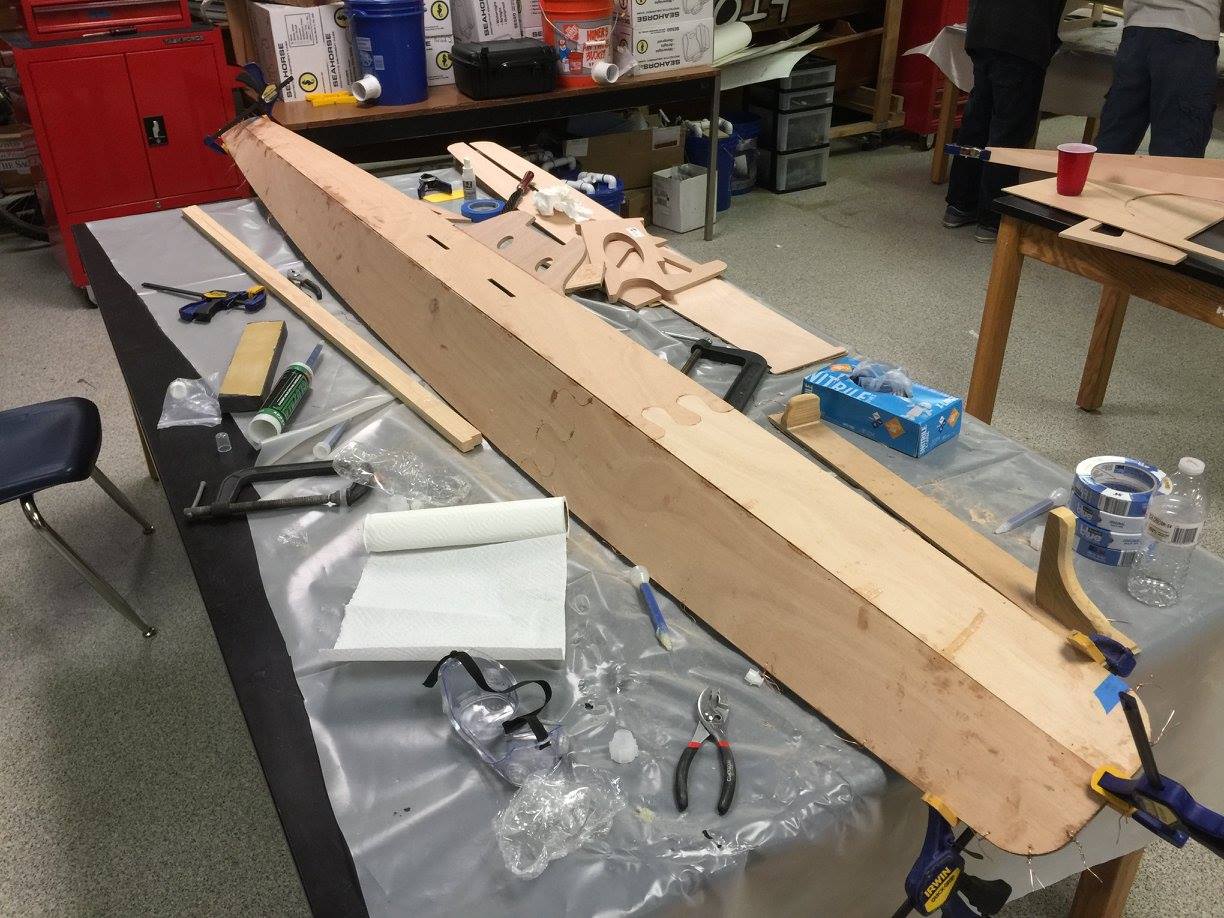
The assembled outrigger. The resemblance to a submarine is not incidental; this is a "wave-piercing" design.
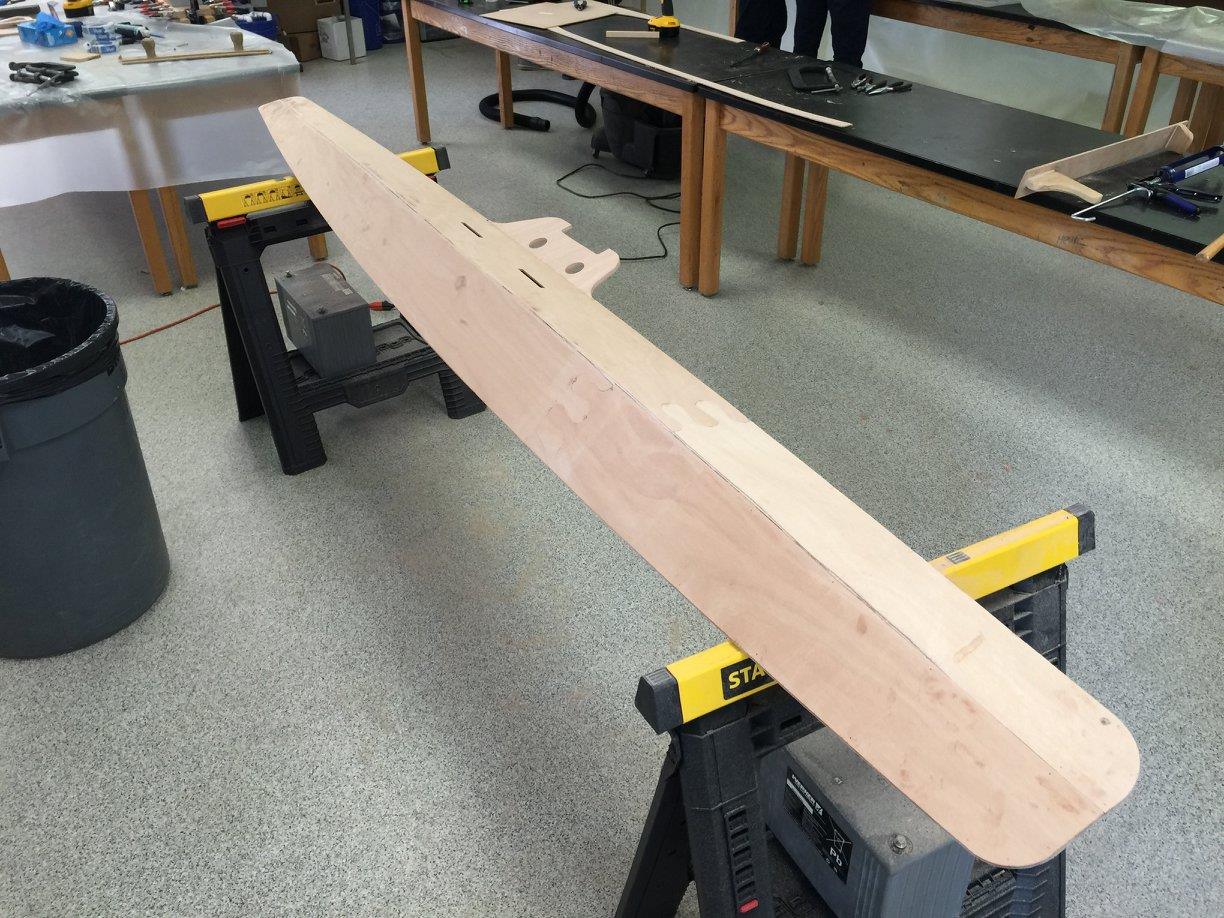
The outrigger, ready for fiberglass.
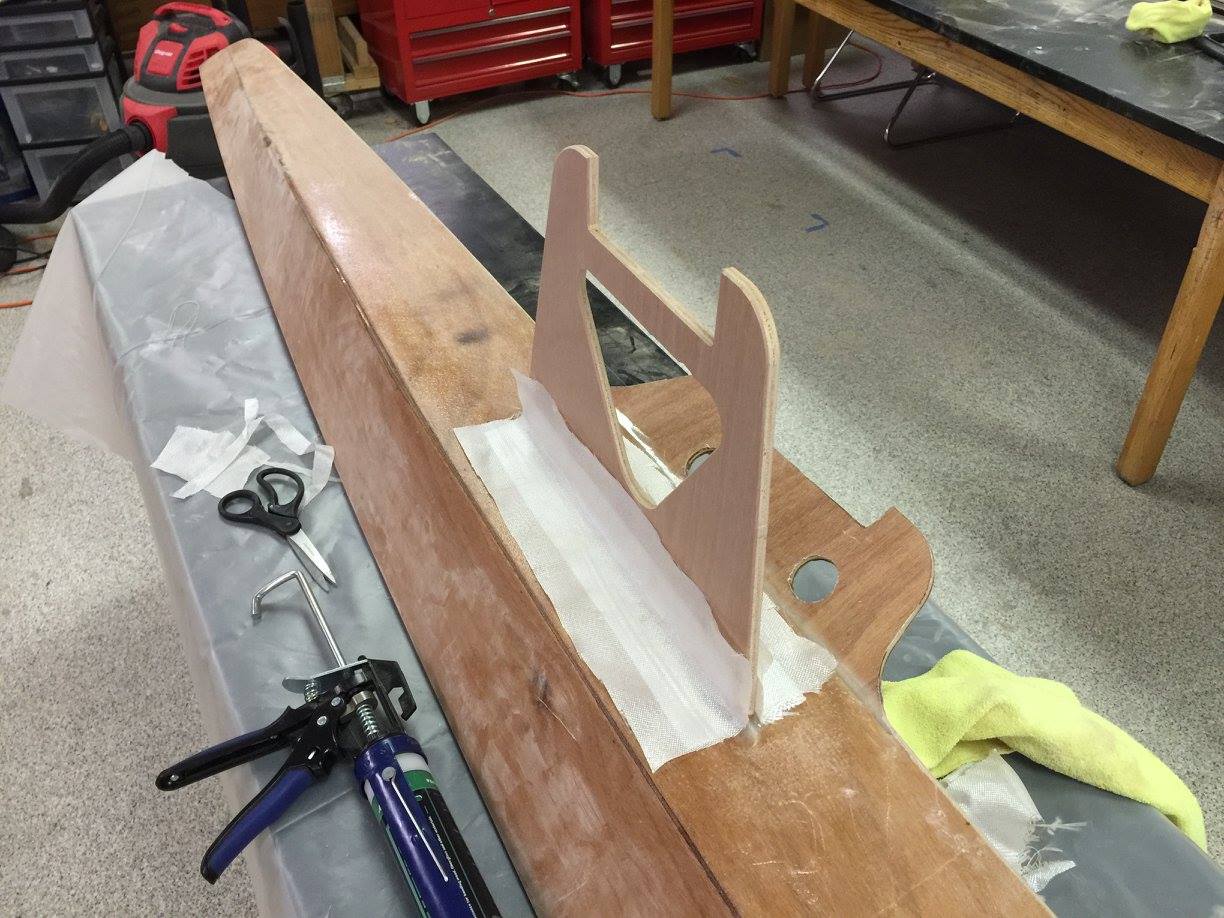
Fastening struts to the outrigger.
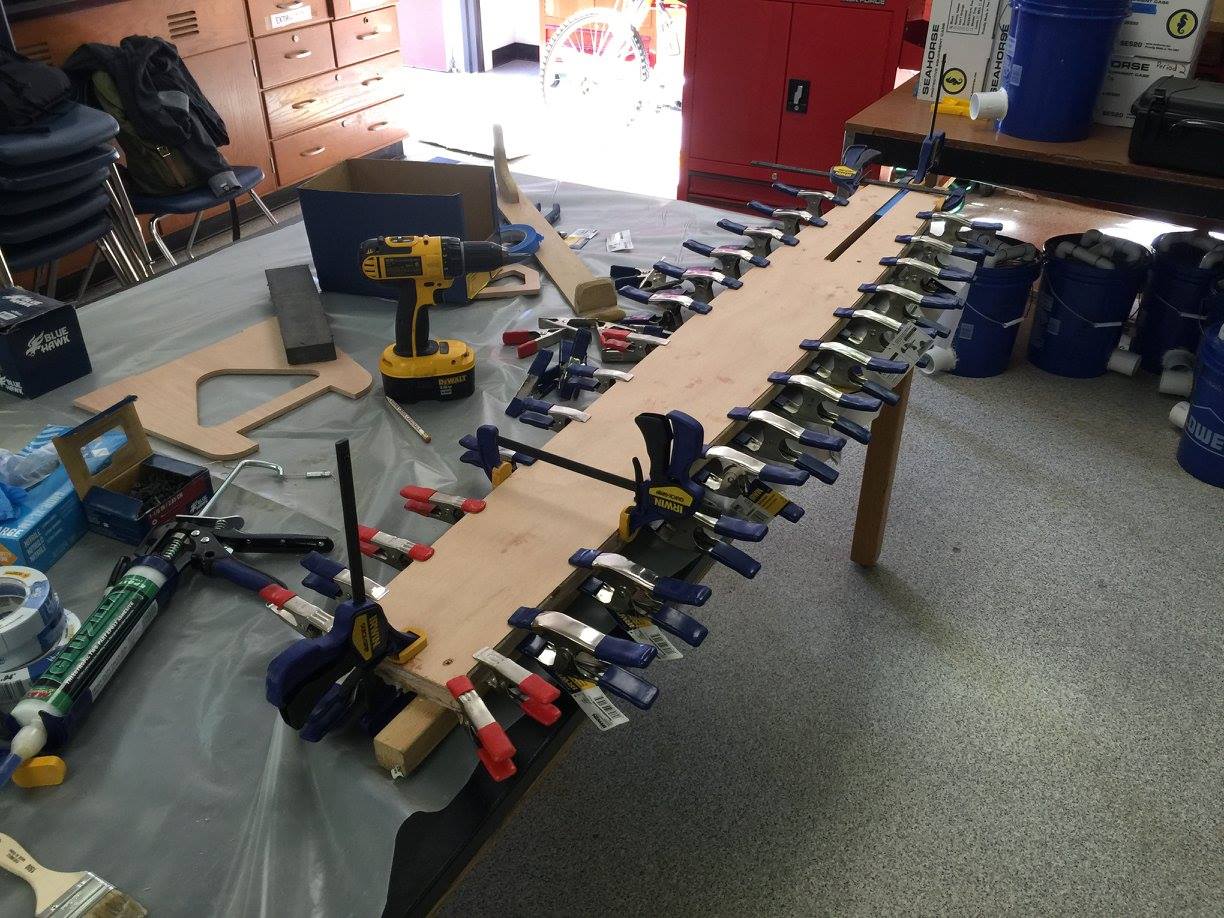
Laminating the hollow crossbeam ("aka"). It's made of two skins of 3mm okoume over a sitka spruce frame.
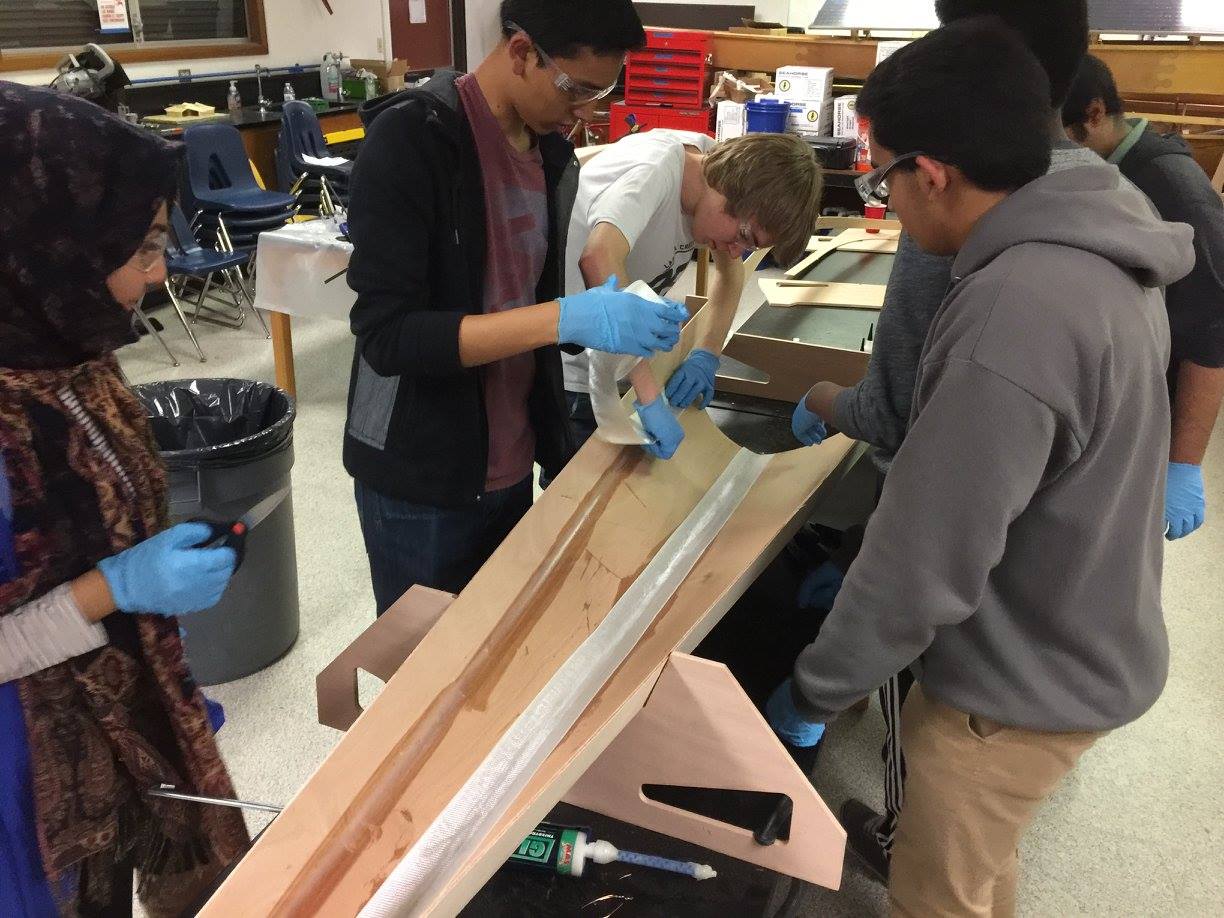
Taping the seams on the underside of the deck assembly.
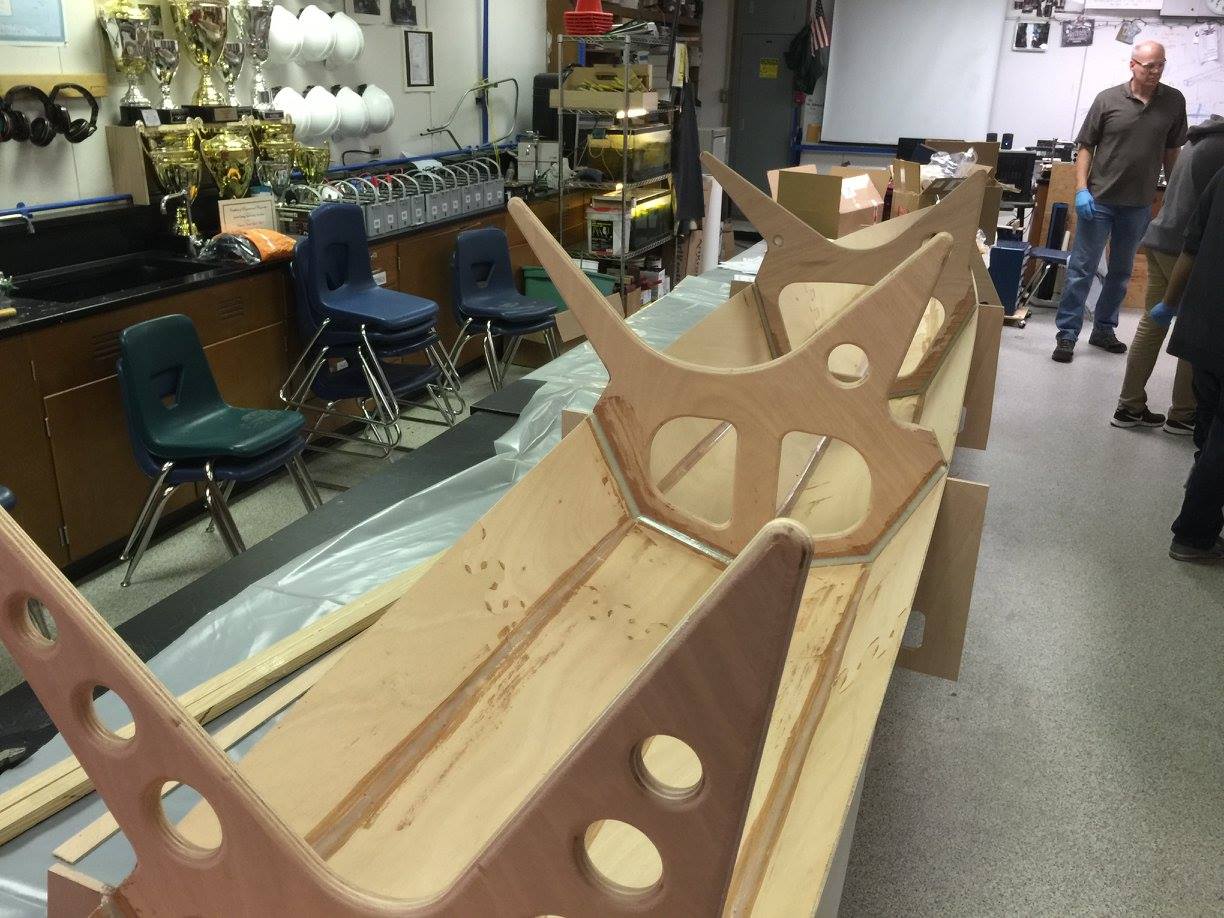
Epoxy fillets in the main hull. Struts to support the solar arrays protrude from structural bulkheads. Thanks to MAS Epoxies, we used Gluezilla for all filleting and bonding work. It saved hours and hours.
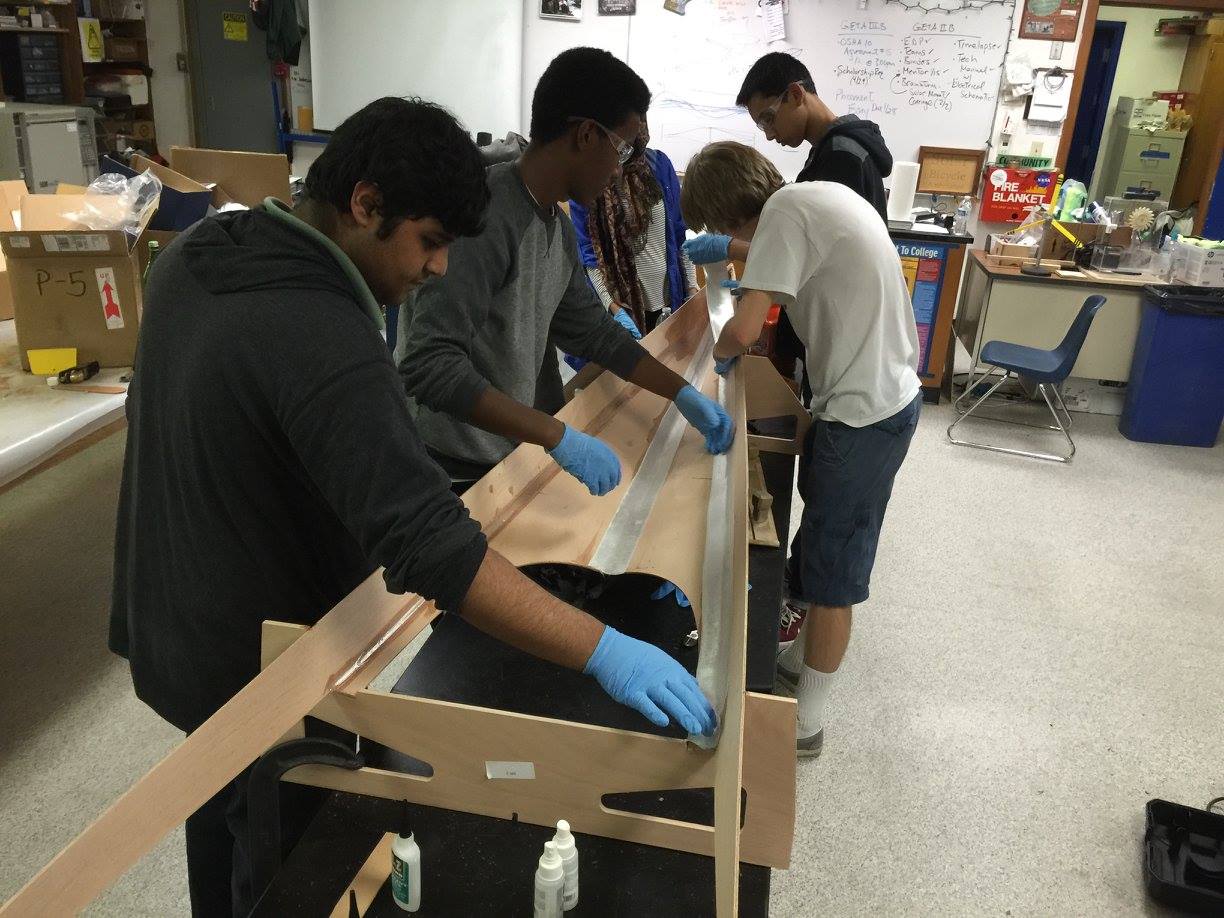
Applying fiberglass tape to the underside of the deck.
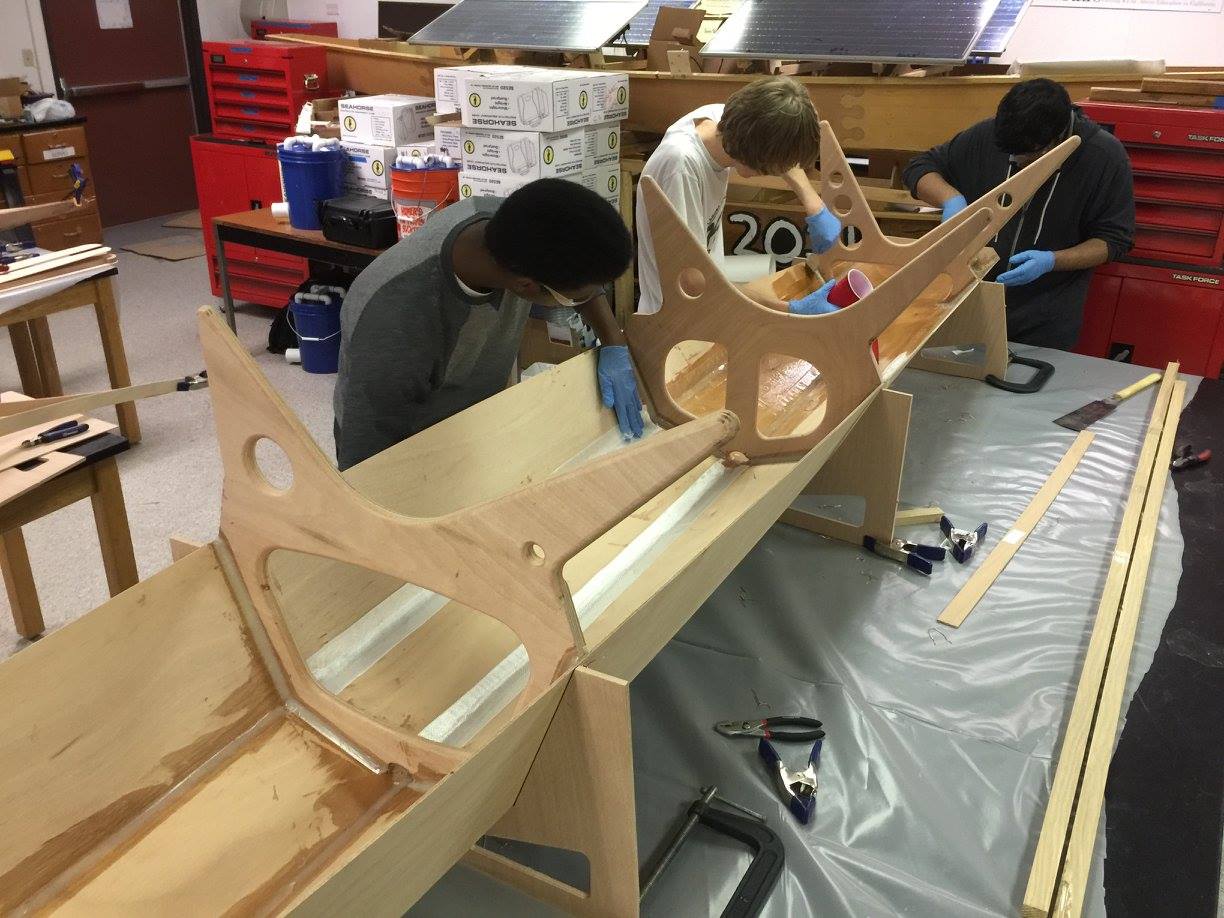
Fiberglass tape on the seams in the hull.
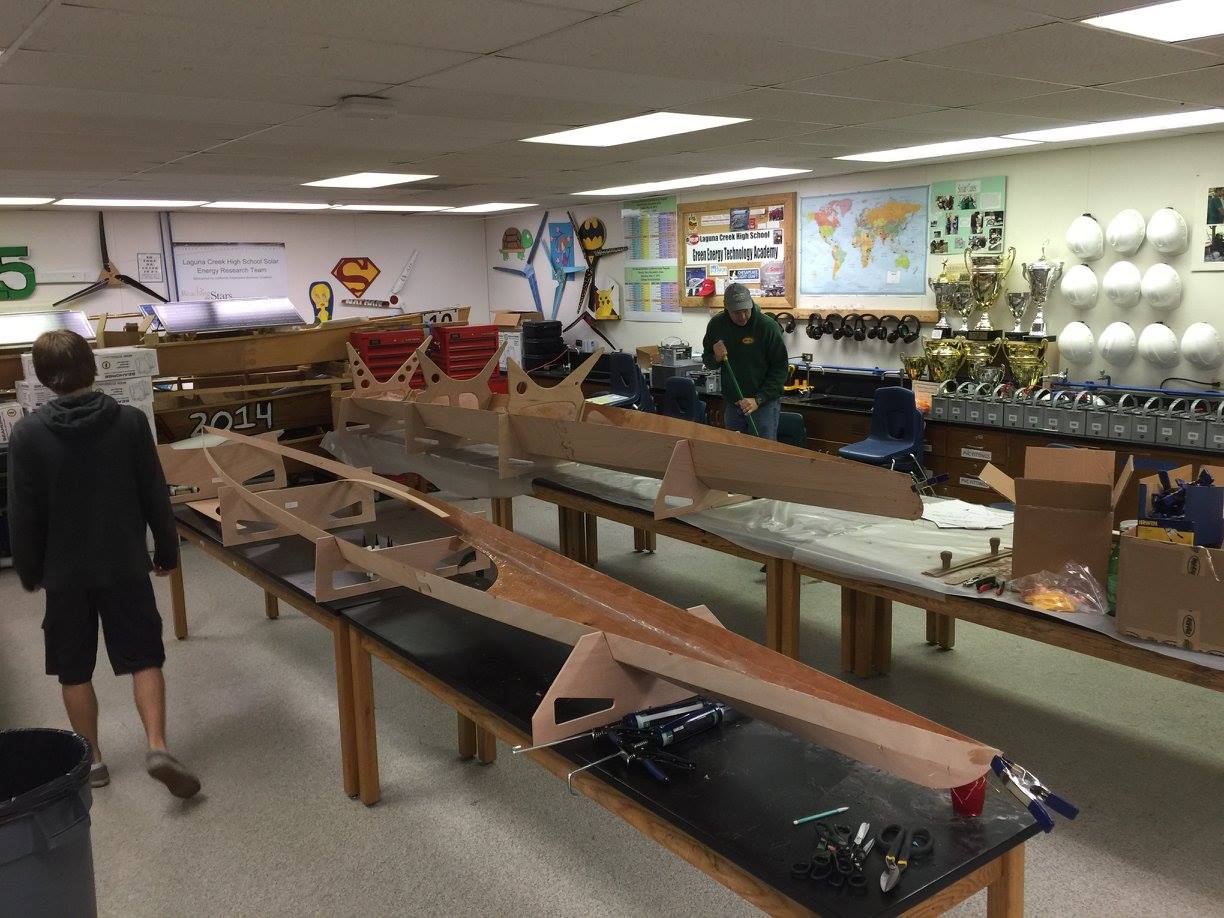
Deck and hull cure at the end of Day 1, ready to be mated up.
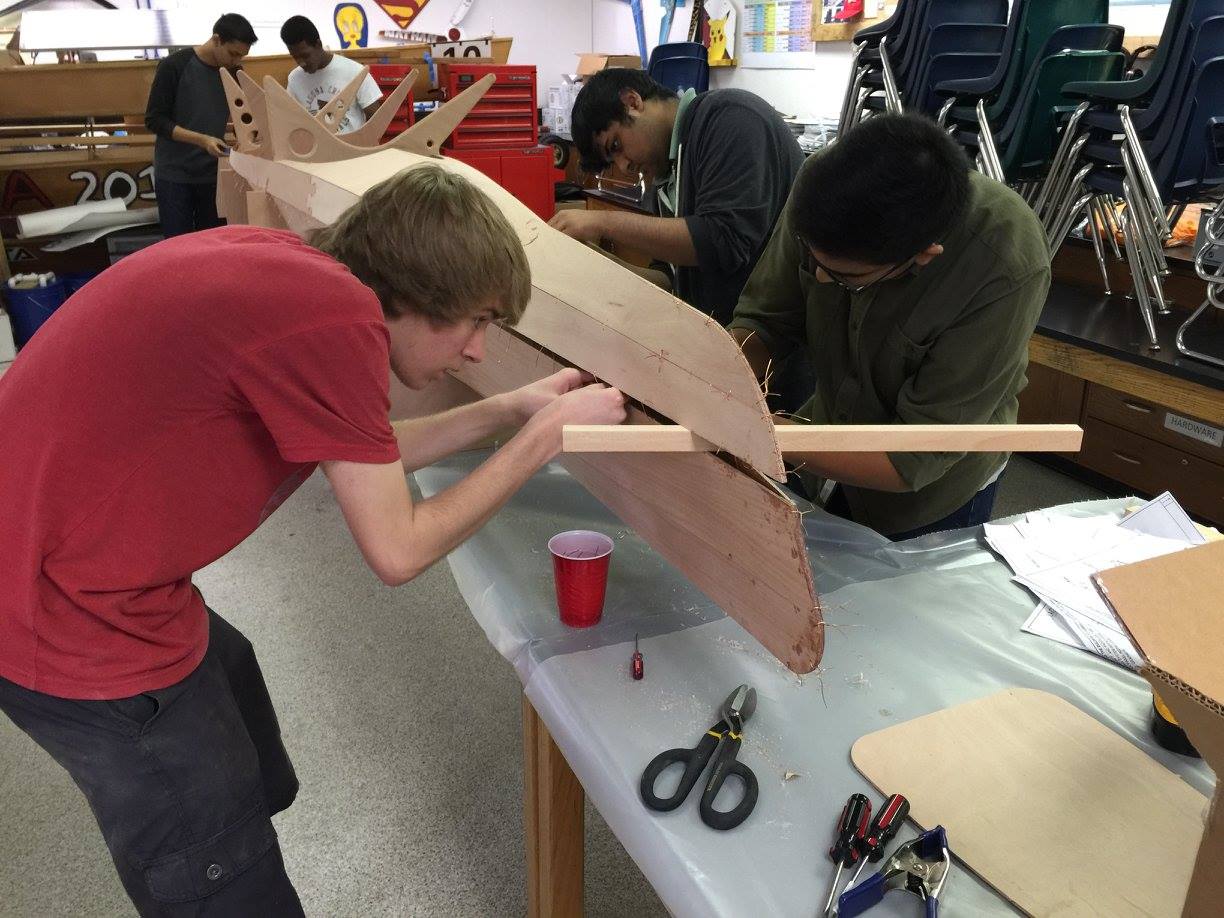
Joining the hull and the deck early on Day 2.
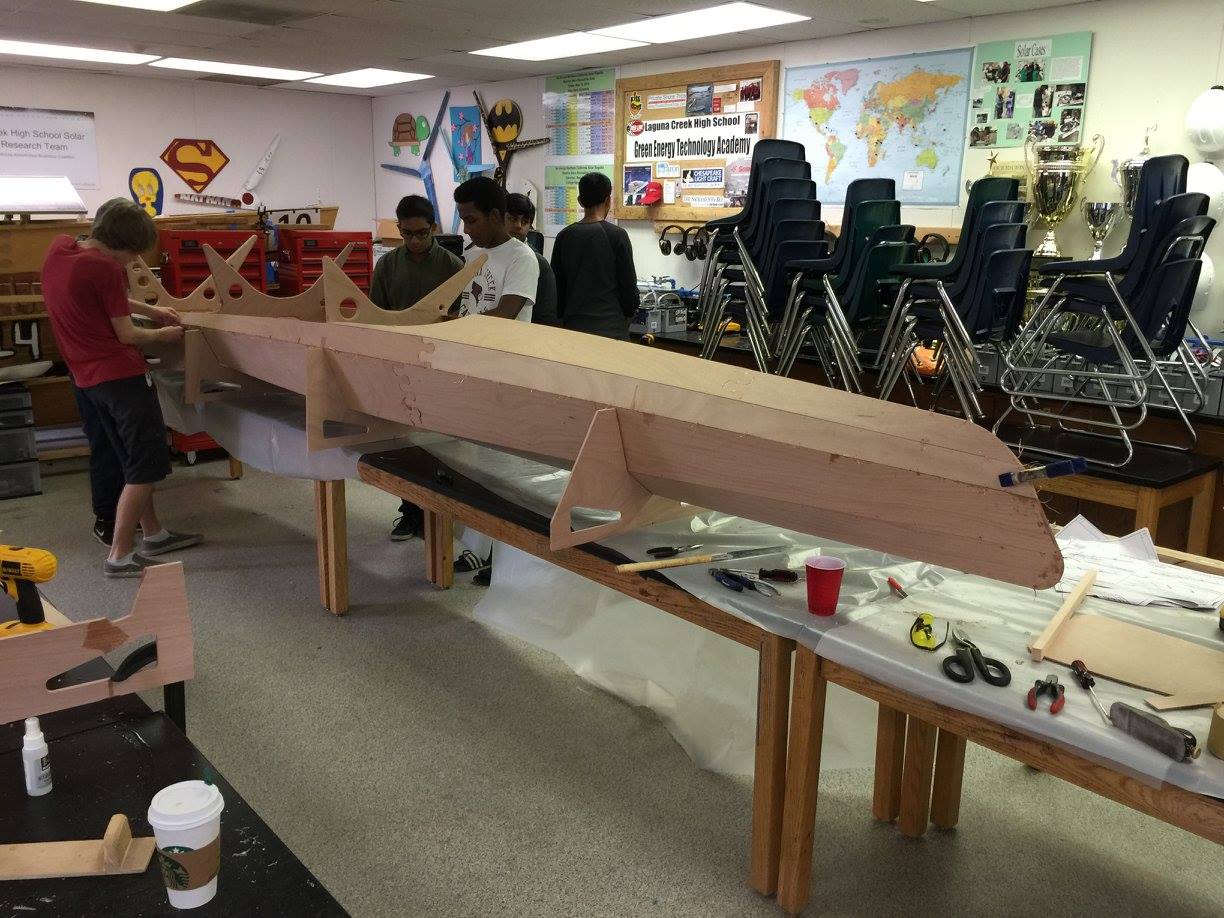
Hull assembled! The wave-piercing dreadnought bow confers some advantages in certain conditions of chop, but it's mainly there for style points and to look menacing to the competition.
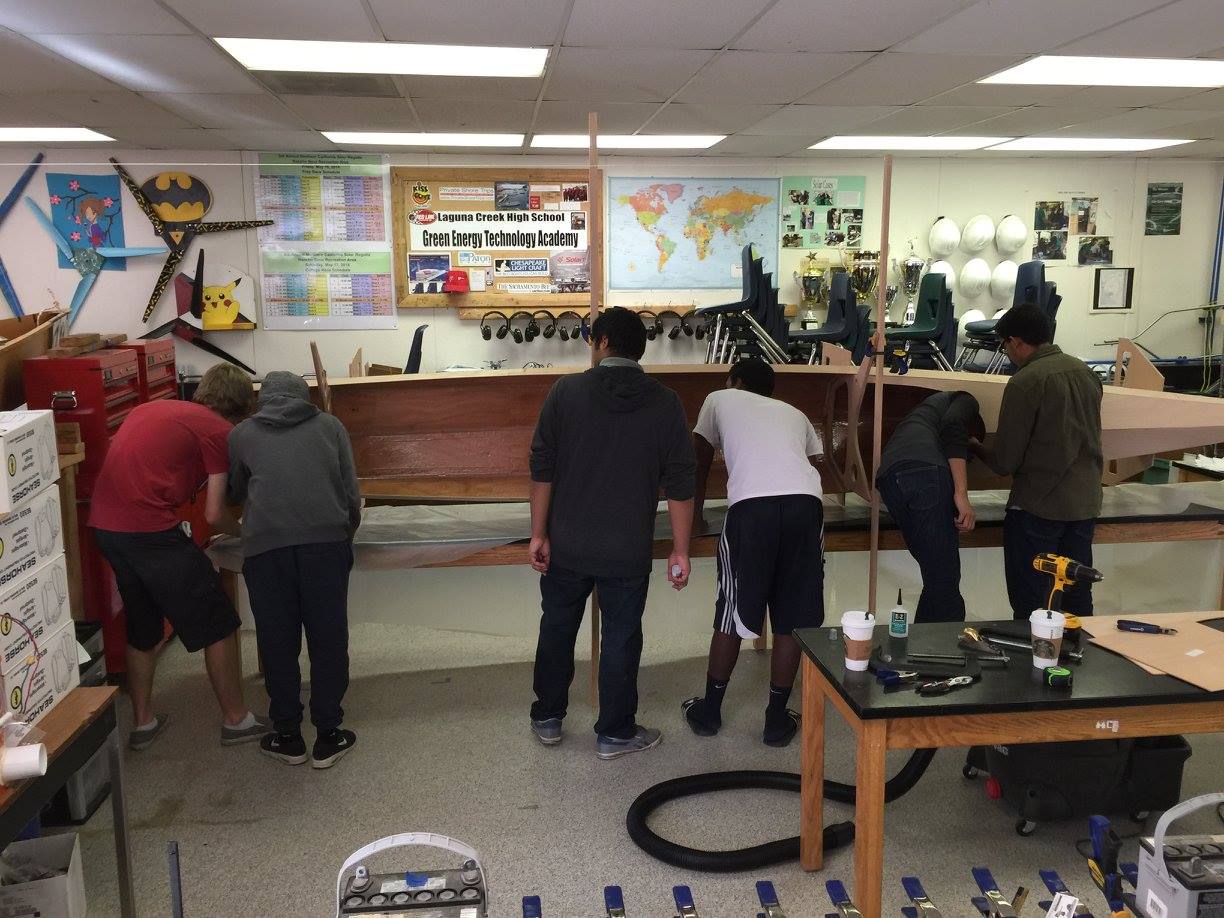
Joining hull and deck with fiberglass tape.
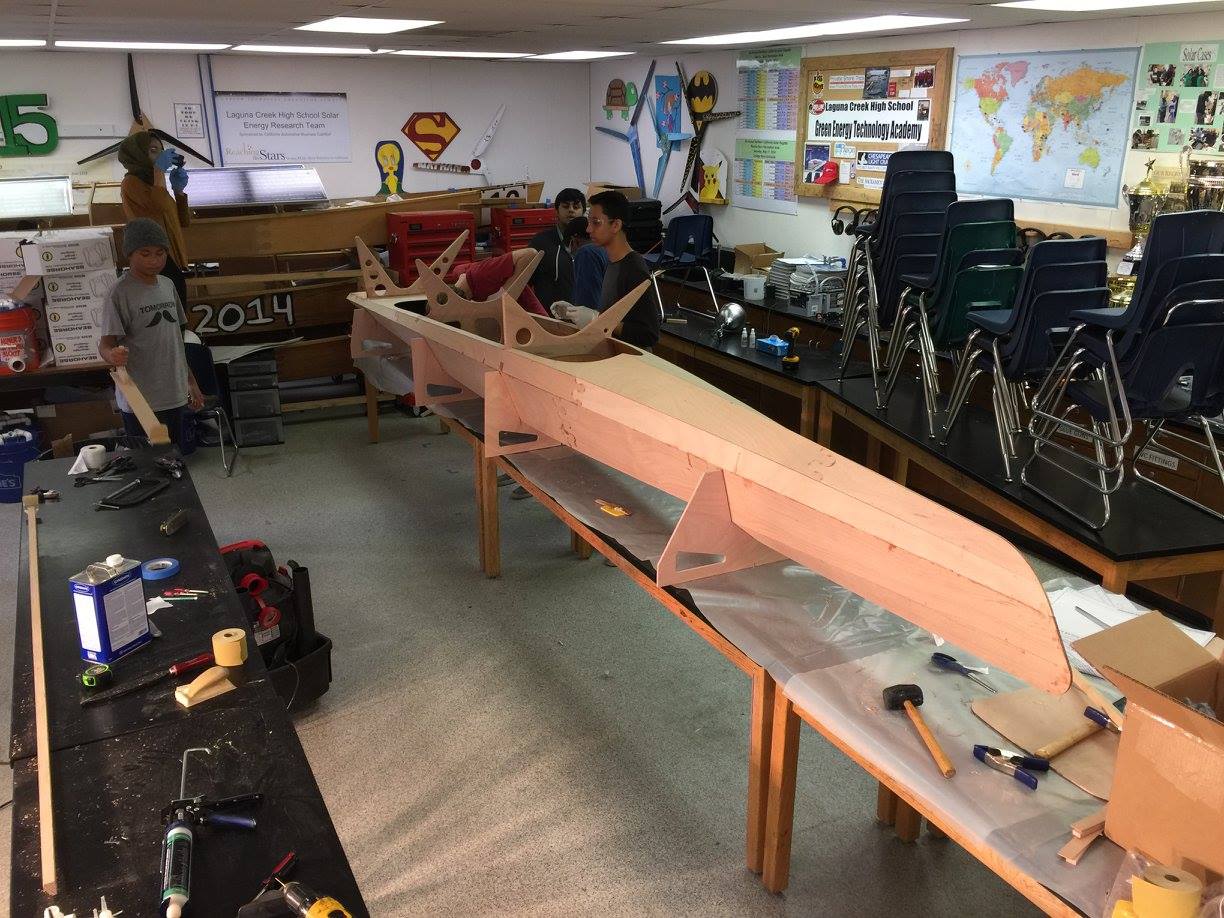
End of Day 2, the main hull looking rakish in its cradles while the epoxy cures.
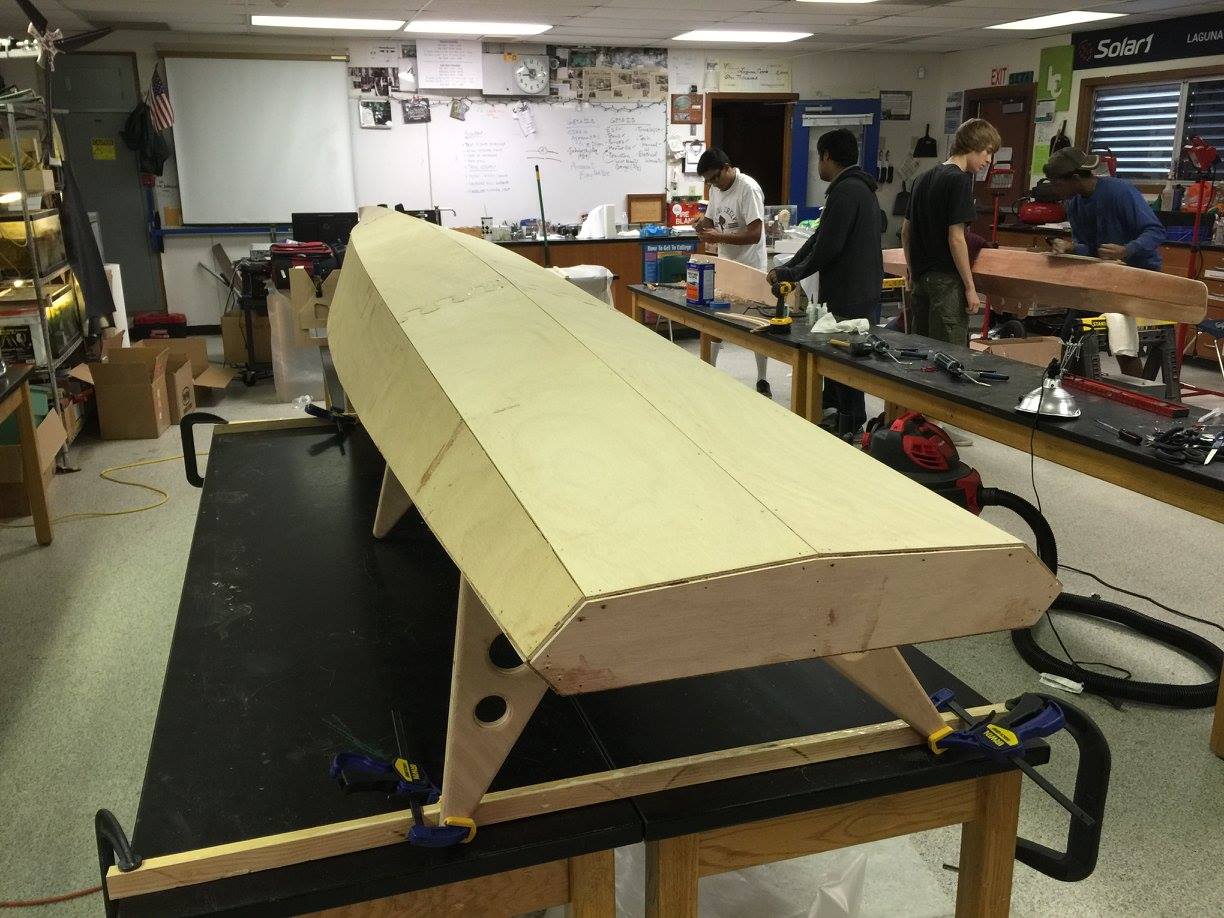
Day 3 brought vigorous sanding of the hull exterior in preparation for a lightweight sheathing of fiberglass.
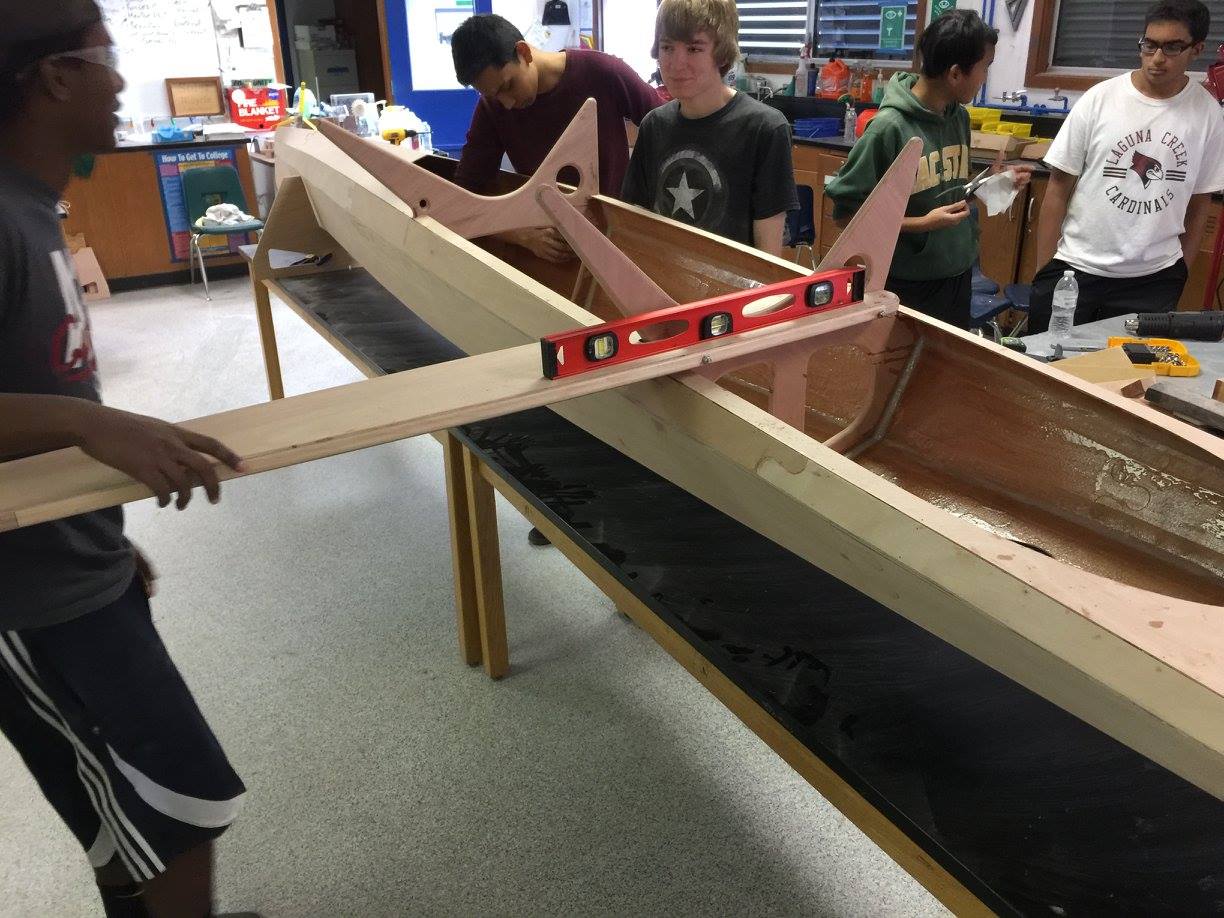
But first, a trial assembly to see how everything fits!
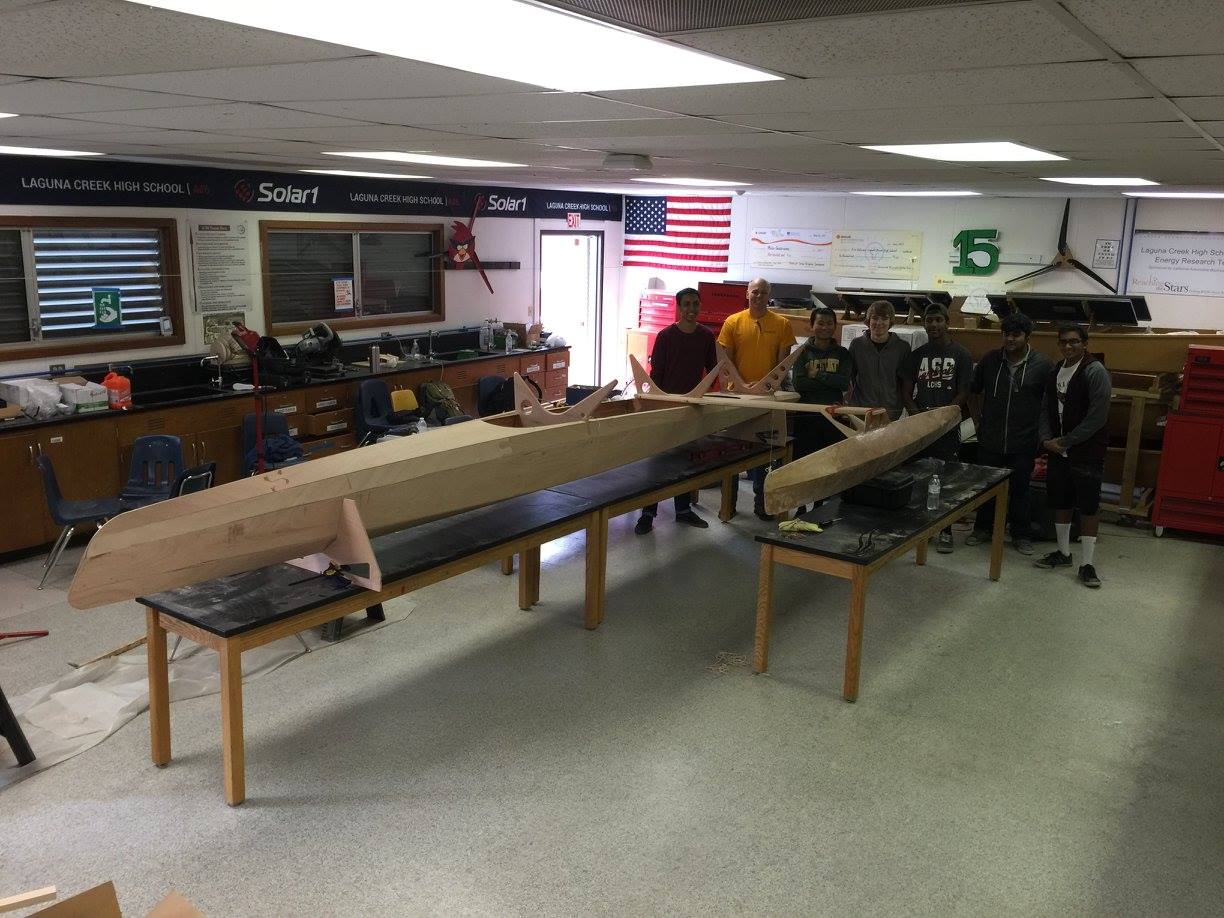
Most of the Green Energy Technology Acadamy team pose behind the assembled racer. It weighs about 70 pounds at this point.
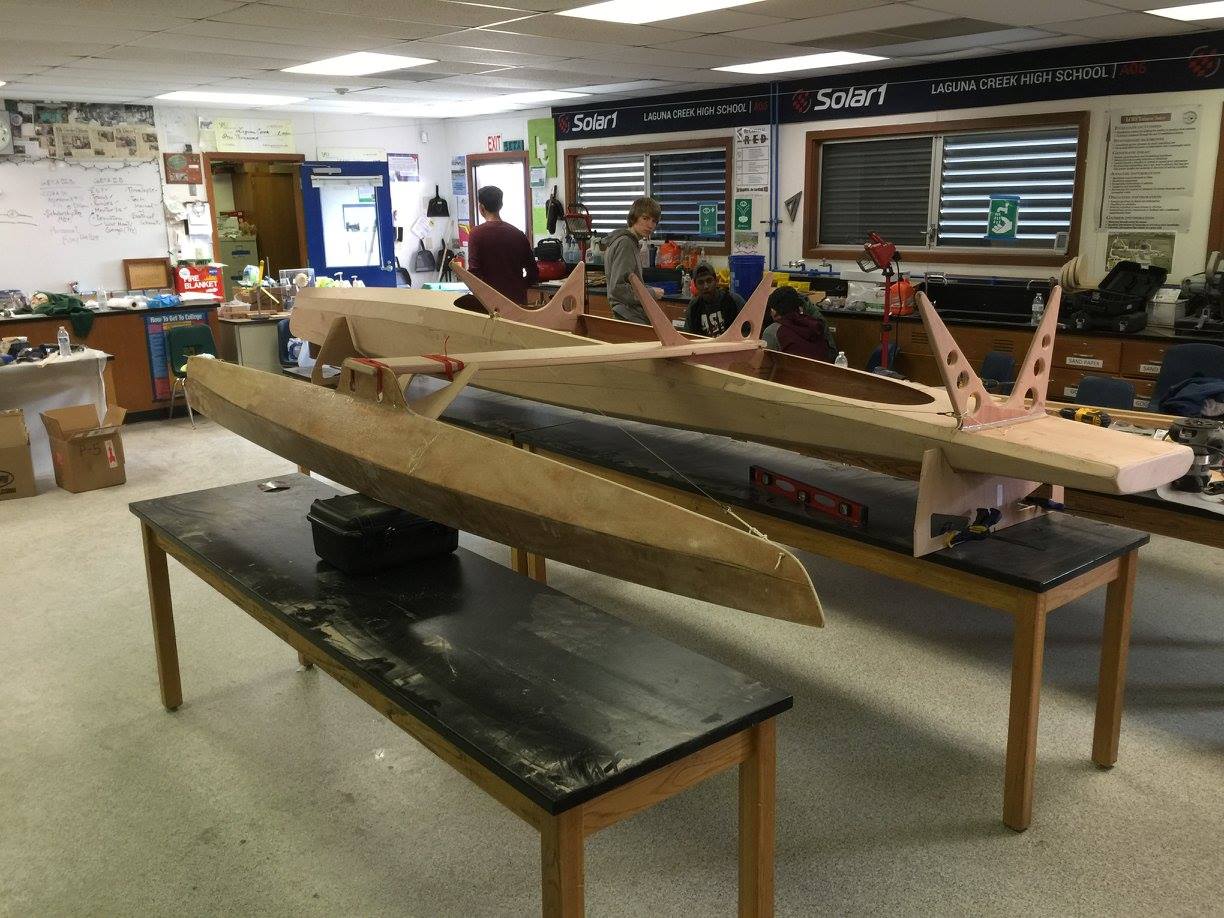
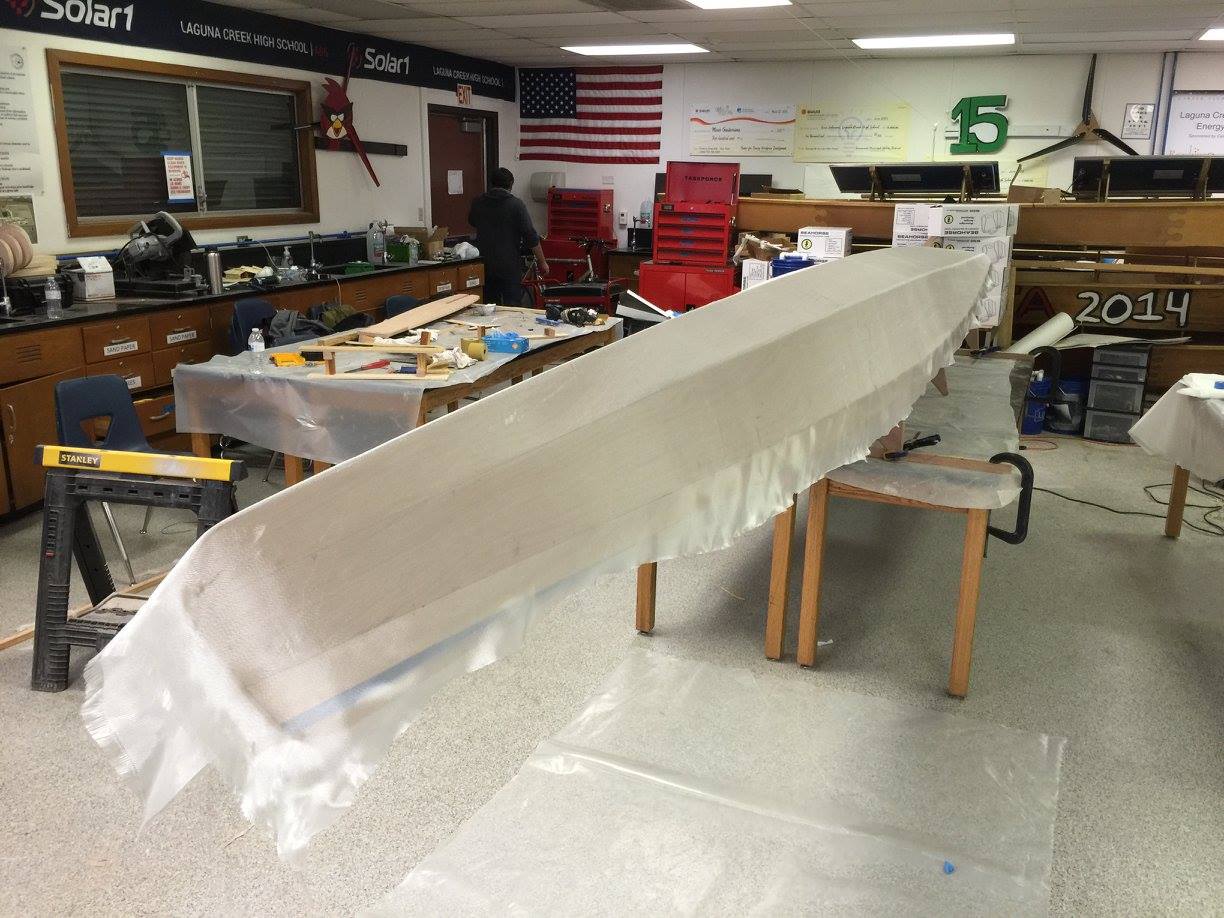
Middle of Day 3, and 4-ounce fiberglass is applied to the inverted hull.
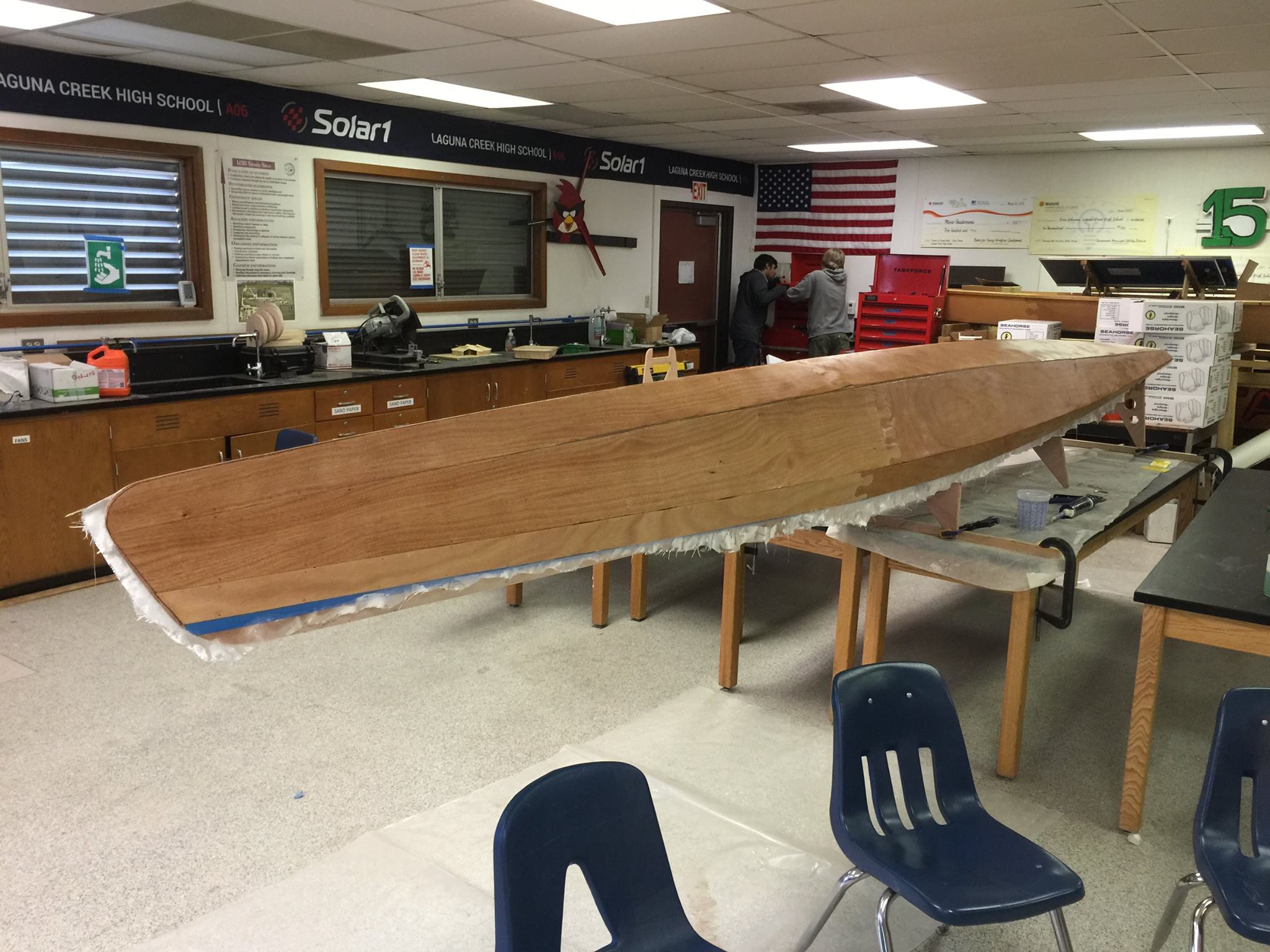
Not bad for a part of a Friday, all day Saturday, and part of a Sunday! The kids will carry on and complete the boat with plenty of time for trials and refinement before the race in May 2016.
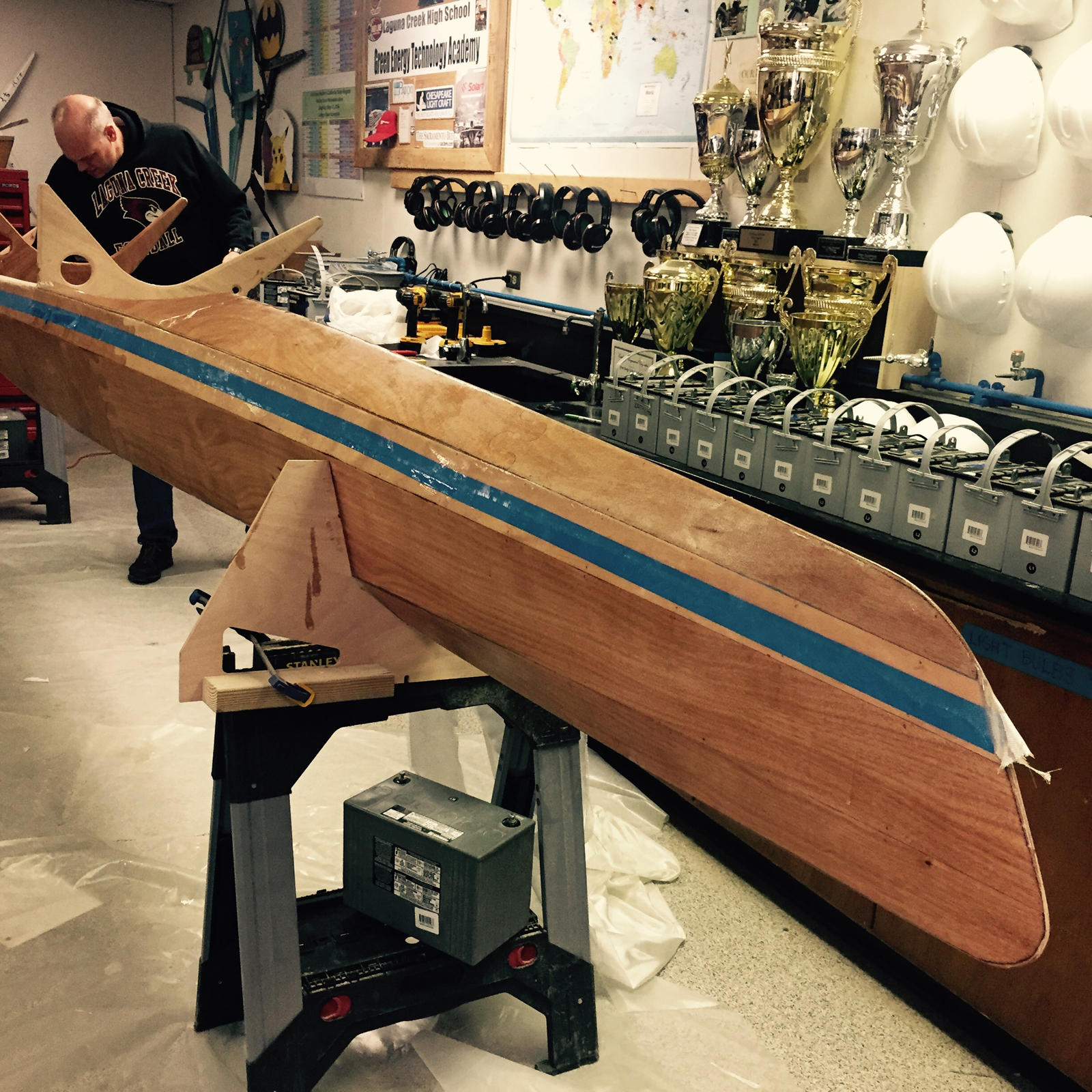


 return to section:
return to section: 



